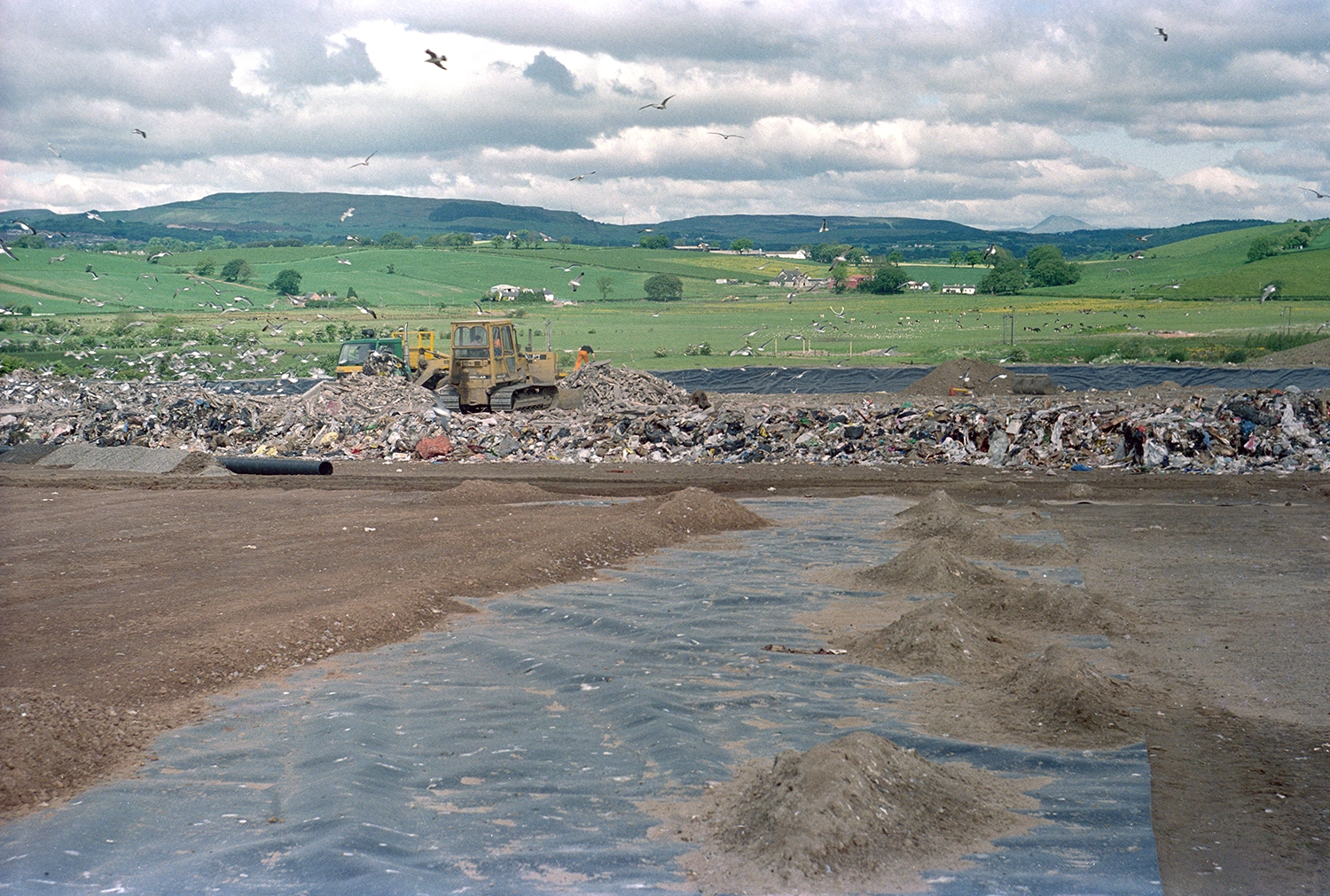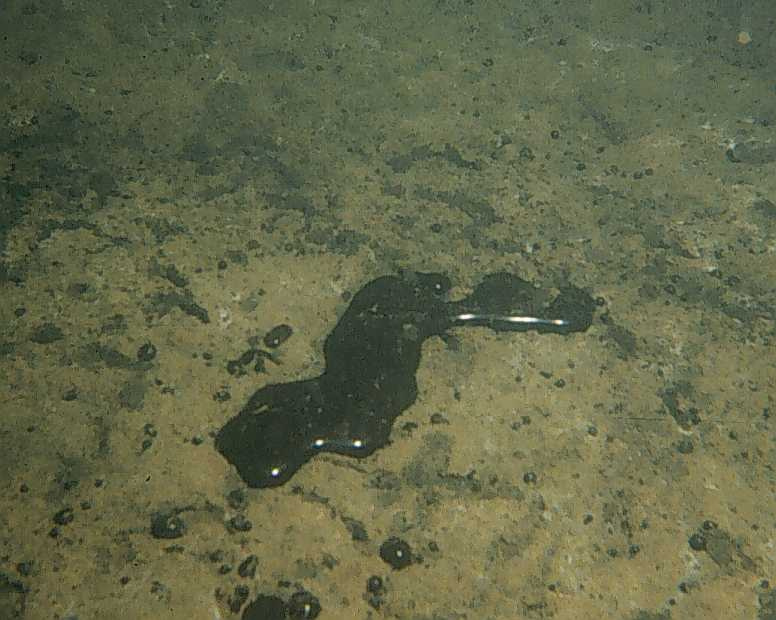Point-source water pollution is pollution that is discharged from a discrete location. Point-source pollutants in groundwater are usually found in a plume that has the highest concentrations of the pollutant nearest the source and diminishing concentrations further away from the source.
The various types of point source pollutants found in waters are as varied as the types of business, industrial, agricultural and urban sources that produce them.

Summerston landfill site near Glasgow, Scotland, 1995. The landfill site was active from 1986 to 2002. BGS © UKRI.
Point sources can include:
- direct discharges from factories such as raw materials and wastes may include pollutants such as solvents, petroleum products (such as oil and gasoline), or heavy metals
- point sources of pollution from agriculture may include animal feeding operations and animal waste treatment lagoons, or storage, handling, mixing, and cleaning areas for pesticides, fertilisers and petroleum
- municipal point sources might include waste-water treatment plants, landfill sites, garages, motor pools and fleet-maintenance facilities
- other sources include mine discharge water and mine spoil run-off
Non-aqueous phase organic compounds
In groundwater some of the most persistent point-source pollutants are volatile organic compounds, which include manufactured and refined toxic substances, and non-aqueous phase organic compounds. These are split into ‘light’ and dense’ non-aqueous phase organics liquids, also called LNAPL and DNAPL. (‘Light’ in this case means the compound has a lower density than water and ‘dense’ means that the compound is denser than water.)
Once LNAPLs infiltrate to the subsurface, they are commonly retained close to the water table, within the zone of fluctuation. The effort to locate and remove LNAPLs is relatively cheaper and easier than that needed for DNAPLs. Examples of LNAPLs are petrol, diesel and other hydrocarbons.
DNAPLs tend to sink below the water table when spilled in significant quantities. They are difficult to locate and remediate because they come to rest in the subsurface as disconnected blobs and ganglia of liquid, and in potentially mobile distributions referred to as pools.

Creosote is denser than water and so forms into potentially mobile blobs or pools. This image is of creosote at the bottom of the Puget Sound. Public domain image from the US EPA.
Once DNAPLs are present in bedrock, they will slowly dissolve into groundwater, giving rise to aqueous phase plumes. The plumes will generally migrate in the hydraulically down-gradient direction, subject to advection, dispersion, sorption to fracture walls, possible biodegradation and matrix diffusion.
Examples of materials that are DNAPLs when spilled include:
- chlorinated solvents, such as trichloroethylene, tetrachloroethene, 1,1,1-trichloroethane and carbon tetrachloride
- coal tar
- creosote
- polychlorinated biphenyls (PCBs)
Chlorinated solvents
Although chlorinated solvents tend to be relatively resistant to degradation within most aquifer systems, there can be effective degradation in anaerobic systems. Under suitable conditions, biodegradation and volatilisation can contribute significantly to the removal of chlorinated solvents from the subsurface, making natural attenuation a potentially important remediation alternative.
A study of chlorinated solvent distribution in the Permo–Triassic sandstone of north-west England showed that significant changes in lithology and permeability on the submetre scale control the distribution of solvents in the unsaturated zone (Lawrence et al., 2006). These compounds may also be volatile and give rise to vapour plumes in the unsaturated zone.
- BGS was part of an international, multidisciplinary team that investigated these issues in the Source Area in situ BioREmediation (SABRE) project
Further reading
Lawrence, A, Stuart, M, Cheney, C, Jones, N, and Moss, R. 2006. Investigating the scale of structural controls on chlorinated hydrocarbon distributions in the fractured-porous unsaturated zone of a sandstone aquifer in the UK. Hydrogeology Journal, Vol. 14, 1470–1482. DOI: https://doi.org/10.1007/s10040-006-0068-6
Wealthall, G P, Rivett, M O, and Dearden, R A. 2010. A review of transport and attenuation of dissolved-phase volatile organic compounds (VOCs) in the unsaturated zone. British Geological Survey Open Report OR/10/061. (Nottingham, UK: British Geological Survey.) Available: http://nora.nerc.ac.uk/12787/

